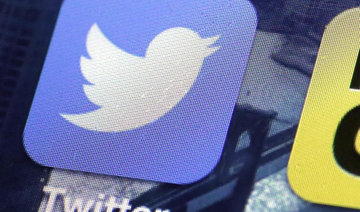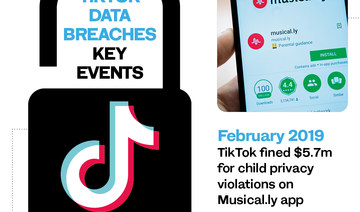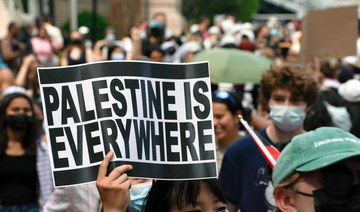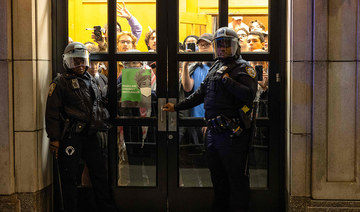NEW YORK: Twitter made money for the first time in its nearly 12-year history, a milestone that satisfied investors in the short term but might not resolve the company’s broader problems any time soon.
The company is still struggling to get people to sign up, despite the attention President Donald Trump’s no-holds barred tweets have drawn to the service. One problem: Anyone can read tweets without signing up. As a result, Twitter’s user base pales compared with Facebook and the Facebook-owned Instagram.
And that means fewer advertising opportunities.
Beyond that, Twitter has been dealing with policing hate speech and abusive comments, fake accounts and attempts by Russian agents to spread misinformation. Every time Twitter tries to respond to a problem, it’s either not good enough, or some other problem emerges.
“They are playing whack-a-mole with these problems,” said Michael Connor, whose Open Mic group helps investors push tech companies to address privacy, abuse and other issues. “They say they have the problem under control, but they don’t know what the problem is exactly.”
Add to that a revolving door of executives, including an influential chief operating officer leaving after Thursday’s earnings report.
Twitter said it had an average of 330 million monthly active users in the final three months of last year, unchanged from the previous quarter and below Wall Street’s estimate of 333 million. By contrast, Facebook has 2.2 billion and Instagram has more than 800 million.
Twitter hadn’t turned a profit until now because — competing with Facebook, Google and others for digital ad dollars — it didn’t attract enough advertising revenue to make up for its expenses. But it’s been cutting costs and focusing on new revenue streams, such as live video.
In some good news, the company grew revenue by 2 percent to $732 million in the final three months of 2017. That’s above the $687 million that analysts polled by FactSet were expecting. Its net income — a first — was $91 million, or 12 cents per share. Adjusted earnings were 19 cents, above analysts’ expectations of 14 cents.
After the results came out, the company’s stock jumped more than 17 percent in morning trading to $31.64, its highest level since 2015.
The quarter “was a breath of fresh air for investors that have patiently awaited for this turnaround story to manifest after years of pain,” said Daniel Ives, head of technology research at GBH Insights.
Nonetheless, Twitter has big challenges ahead. Connor said that while investors don’t want to micromanage Twitter, they at least want the company “to show that there is a level of management and governance on the senior level in place willing to address these issues.”
While Twitter is well-known, it remains difficult to use, making it difficult for the company to explain to people why they need it. Twitter also has an “image problem,” Wedbush analyst Michael Pachter said in a recent research note, “as it has been slow to act on harassment and other hostile behavior.”
The company has enacted a slew of new policies, and Pachter says this renewed focus should help. But enforcing them will be a bigger hurdle .
Connor’s group recently helped two large Twitter and Facebook shareholders file resolutions asking the companies to take more responsibility for fake news, abuse and hate speech. The companies have not formally responded, though Twitter has introduced a slew of new measures to weed out abusive account and has said that it “cares deeply” about misinformation and its harmful effect on civic discourse.
Then there’s the issue of automated accounts made to look like real people. In the days after a New York Times report on the “shadowy global marketplace” of brands and celebrities buying fake retweets and followers, prominent Twitter users collectively lost more than a million followers, suggesting that Twitter either didn’t know or didn’t act until the expose.
Fake accounts aren’t a new problem. Last June, Twitter said it has been “doubling down” on its efforts to weed out such accounts by “expanding our team and resources, and building new tools and processes.” It estimates that less than 5 percent of monthly active users are fake. But the Times referenced a report saying it could be as high as 15 percent.
One chief problem: more fake accounts keep popping up, and those behind them are getting smarter, so Twitter’s countermeasures haven’t made much of a dent.
Forrester Research analyst Erna Alfred Liousas said that while rival social networks such as Facebook deal with fake accounts, too, it may be “more elevated for Twitter” because there has been so much focus on its monthly user numbers. Anything that could jeopardize advertisers’ ability to see how many people they will reach, she said, “is going to cause concern.”
Another concern: last month Chief Operating Officer Anthony Noto announced his resignation from the company following Thursday’s earnings report. Noto, who was also finance chief until last July, has served an influential and important role at the company and had led its venture into live video. Twitter said it is not replacing Noto, and instead will split his duties between executives.
“Now (that) he’s gone, who’s running the company?” Pachter said.
Technically, that’s CEO Jack Dorsey. But Dorsey splits his time as head of payments company Square.
Twitter has “less than Jack’s undivided attention,” Pachter said, adding that nonetheless Dorsey runs the company with a “benevolent autocracy” that leaves little room for innovation.
By contrast, Pachter said Facebook CEO Mark Zuckerberg “is not afraid if they alter his baby, his invention, to make it better,” even if in the end Zuckerberg may be the final arbiter.
Twitter declined to comment. But Dorsey said at a conference late last year that it’s “not about the amount of time I spend at one thing but how I spend the time and what we’re focused on.”
Twitter makes money for first time ever, but problems remain
Twitter makes money for first time ever, but problems remain
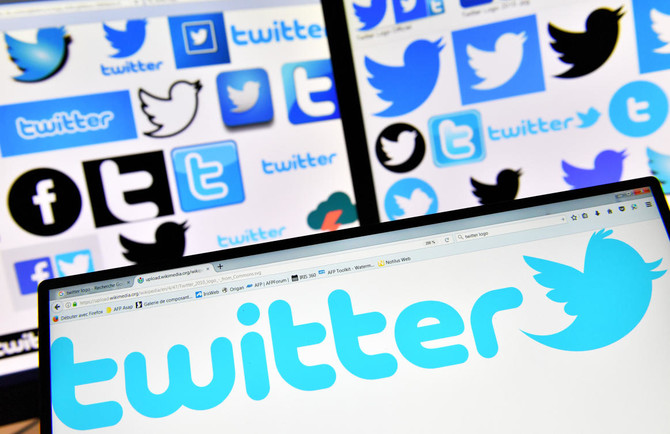
Russian state media is posting more on TikTok ahead of the US presidential election, study says
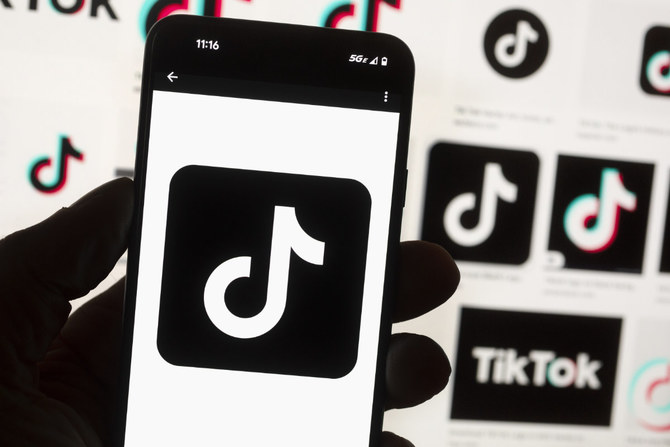
- State-linked accounts are also active on other social media platforms and have a larger presence on Telegram and X than on TikTok, says Brookings Institution report
- The report comes after Biden last month signed legislation forcing TikTok’s parent company — China-based ByteDance — to sell the platform or face a ban in the US
Russian state-affiliated accounts have boosted their use of TikTok and are getting more engagement on the short-form video platform ahead of the US presidential election, according to a study published Thursday by the nonprofit Brookings Institution.
The report states that Russia is increasingly leveraging TikTok to disseminate Kremlin messages in both English and Spanish, with state-linked accounts posting far more frequently on the platform than they did two years ago.
Such accounts are also active on other social media platforms and have a larger presence on Telegram and X than on TikTok. However, the report says user engagement — such as likes, views and shares — on their posts has been much higher on TikTok than on either Telegram or X.
“The use of TikTok highlights a growing, but still not fully realized, avenue for Russia’s state-backed information apparatus to reach new, young audiences,” reads the report, which drew data from 70 different state-affiliated accounts and was authored by Valerie Wirtschafter, a Brookings fellow in foreign policy and its artificial intelligence initiative.
The study notes that most posts do not focus on US politics but other issues, like the war in Ukraine and NATO. However, those that do tend to feature more divisive topics like US policy on Israel and Russia, and questions around President Joe Biden’s age, the Brookings report says.
A TikTok spokesperson said the company has removed covert influence operations in the past and eliminated accounts, including 13 networks operating from Russia.
The spokesperson said TikTok also labels state-controlled media accounts and will expand that policy in the coming weeks “to further address accounts that attempt to reach communities outside their home country on current global events and affairs.”
The Brookings report comes after Biden last month signed legislation forcing TikTok’s parent company — China-based ByteDance — to sell the platform or face a ban in the US. The potential ban is expected to face legal challenges.
US media experts demand review of New York Times story on sexual violence by Hamas on Oct. 7
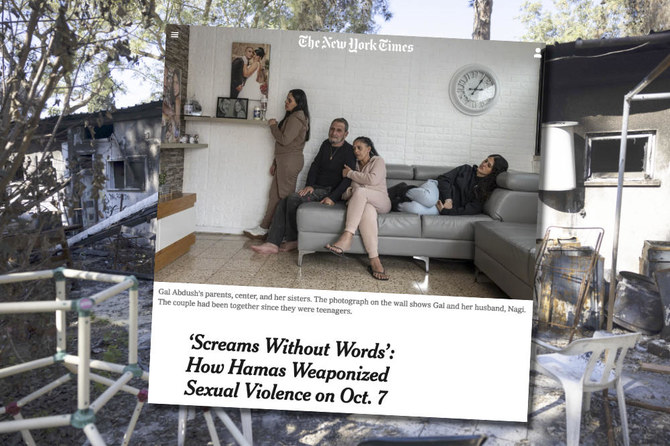
- 64 American journalism professionals sign letter accusing the newspaper of failing to do enough to investigate and confirm the evidence supporting the allegations in its story
- It concerns a story headlined ‘Screams Without Words: Sexual Violence on Oct. 7’ that ran on the front page of the newspaper on Dec. 28
CHICAGO: Sixty-four American journalism professionals signed a letter sent to New York Times bosses expressing concern about a story published by the newspaper that accused Palestinians of sexual violence against Israeli civilians during the Oct. 7 attacks.
It concerns a story headlined “Screams Without Words: Sexual Violence on Oct. 7” that ran on the front page of the newspaper on Dec. 28 last year.
In the letter, addressed to Arthur G. Sulzberger, chairperson of The New York Times Co., and copied to executive editors Joseph Kahn and Philip Pan, the journalism professionals, who included Christians, Muslims and Jews, demanded an “external review” of the story.
It is one of several news reports by various media organizations that have been used by the Israeli government to counter criticisms of the brutal nature of its near-seven-month military response to the Hamas attacks, during which more than 34,000 Palestinians have been killed and most of the homes, businesses, schools, mosques, churches and hospitals in Gaza have been destroyed, displacing more than a million people, many of whom now face famine.
The letter, a copy of which was obtained by Arab News, states that “The Times’ editorial leadership … remains silent on important and troubling questions raised about its reporting and editorial processes.”
It continues: “We believe this inaction is not only harming The Times itself, it also actively endangers journalists, including American reporters working in conflict zones, as well as Palestinian journalists (of which, the Committee to Protect Journalists reports, around 100 have been killed in this conflict so far).”
Shahan Mufti, a journalism professor at the University of Richmond, a former war correspondent and one of the organizers of the letter, told Arab News that The New York Times failed to do enough to investigate and confirm the evidence supporting the allegations in its story.
“The problem is the New York Times is no longer responding to criticism and is no longer admitting when it is making mistakes,” he said. The newspaper is one of most influential publications in the US, he noted, and its stories are republished by smaller newspapers across the country.
This week, the Israeli government released a documentary, produced by pro-Israel activist Sheryl Sandberg, called “Screams Before Silence,” which it said “reveals the horrendous sexual violence inflicted by Hamas on Oct. 7.” It includes interviews with “survivors from the Nova Festival and Israeli communities, sharing their harrowing stories” and “never-before-heard eyewitness accounts from released hostages, survivors and first responders.”
In promotional materials distributed by Israeli consulates in the US, the producers of the documentary said: “During the attacks at the Nova Music Festival and other Israeli towns, women and girls suffered rape, assault and mutilation. Released hostages have revealed that Israeli captives in Gaza have also been sexually assaulted.”
Critics have accused mainstream media organizations of repeating unverified allegations made by the Israeli government and pro-Israel activists about sexual violence on Oct. 7, with some alleging it is a deliberate attempt to fuel anti-Palestinian sentiment in the US and help justify Israel’s military response.
Some suggest such stories have empowered police and security officials in several parts of the US to crack down on pro-Palestinian demonstrations, denouncing the protesters as “antisemitic” even though some of them are Jewish.
New York Mayor Eric Adams, for example, asserted, without offering evidence, that recent protests by students on college campuses against the war in Gaza had been “orchestrated” by “outside agitators.”
Israeli Prime Minister Benjamin Netanyahu has said the protests against his country’s military campaign in Gaza are antisemitic in nature.
Jeff Cohen, a retired associate professor of journalism at Roy H. Park School of Communications at Ithaca College, told Arab News The New York Times story was “flawed” but has had “a major impact in generating support for Israeli vengeance” in Gaza.
He continued: “Israeli vengeance has claimed the lives of tens of thousands of civilians. That’s why so many professors of journalism and media are calling for an independent investigation of what went wrong.
“That (New York Times) story, along with other dubious or exaggerated news reports — such as the fable about Hamas ‘beheading babies’ that President Biden promoted — have inflamed war fever.”
Cohen said the US media “too often … have promoted fables aimed at inflaming war fever,” citing as an example reports in 1990 that Iraqi soldiers had removed babies from incubators after their invasion of Kuwait. The assertions helped frame anti-Iraqi public opinion but years later they were proved to be “a hoax,” he added.
“On Oct. 7, Hamas committed horrible atrocities against civilians and it is still holding civilian hostages,” Cohen said. “Journalists must tell the truth about that, without minimizing or exaggerating, as they must tell the truth about the far more horrible Israeli crimes against Palestinian civilians.
“The problem is that the mainstream US news media have a long-standing pro-Israel bias. That bias has been proven in study after study. Further proof came from a recently leaked New York Times internal memo of words that its reporters were instructed to avoid — words like ‘Palestine’ (‘except in very rare cases’), ‘occupied territories’ (say ‘Gaza, the West Bank, etc.’) and ‘refugee camps’ (‘refer to them as neighborhoods, or areas’).”
Mufti, the University of Richmond journalism professor, said belligerents “on both sides” are trying to spin and spread their messages. But he accused Israeli authorities in particular of manipulating and censoring media coverage, including through the targeted killing of independent journalists, among them Palestinians and Arabs, and said this was having the greatest impact among the American public.
“Broadly speaking, a lot of the Western news media, and most of the world news media, do not have access to the reality in Gaza,” he said. “They don’t know. It is all guesswork.
“They are all reporting from Tel Aviv, they are reporting from Hebron, they are reporting from the West Bank. Nobody actually knows what the war looks like. It is all secondhand information.
“Most of the information is coming through the Israeli authorities, government and military. So, of course, the information that is coming out about this war is all filtered through the lens of Israel, and the military and the government.”
Mufti said the story published by The New York Times “probably changed the course, or at least influenced the course, of the war.”
He said it appeared at a time when US President Joe Biden was pushing to end the Israeli military campaign in Gaza “and it entirely changed the conversation. It was a very consequential story. And it so happens it was rushed out and it had holes in it … and it changed the course of the war.”
Mohammed Bazzi, an associate professor with the Arthur L. Carter Journalism Institute at New York University, told Arab News the letter demanding an “external review” of the story is “a simple ask.”
He added: “This story, and others as well, did play a role” in allowing the Israeli military to take action beyond acceptable military practices “and dehumanize Palestinians.” Such dehumanization was on display before Oct. 7, Bazzi said.
“In the Western media there seemed to be far less sympathetic coverage of Palestinians in Israel’s war in Gaza as a consequence of these stories,” he continued.
“We have seen much less profiles of Palestinians … we are beyond 34,000 Palestinians killed but we don’t have a true number or the true scale of the destruction in Gaza — there could be thousands more dead under the rubble and thousands more who will die through famine and malnutrition. This will not stop, as a consequence of what Israel has done.”
Bazzi said the Western media has contributed to the dehumanization of Palestinians more than any other section of the international media, while at the same time humanizing the Israeli victims.
“The New York Times has a great influence on the US media as a whole and sets a standard” for stories and narratives that other media follow, which is “more pro-Israel and less sympathetic to Palestinians,” he added.
Bazzi, among others, said The New York Times has addressed “only a handful of many questions” about its story and needs to do more to present a more accurate account of what happened on Oct. 7.
The letter to New York Times bosses states: “Some of the most troubling questions hovering over the (Dec. 28) story relate to the freelancers who reported a great deal of it, especially Anat Schwartz, who appears to have had no prior daily news-reporting experience before her bylines in The Times.”
Schwartz is described as an Israeli “filmmaker and former air force intelligence official.”
Adam Sella, another apparently inexperienced freelancer who shared the byline on the story, is reportedly the nephew of Schwartz’s partner. The only New York Times staff reporter with a byline on the story was Jeffrey Gettleman.
Media scrutiny of the story revealed that “Schwartz and Sella did the vast majority of the ground reporting, while Gettleman focused on the framing and writing,” according to the letter.
The New York Times did not immediately respond to requests by Arab News for comment.
Creative tech agency Engage Works to launch in Saudi Arabia

- Representation at the Saudi Entertainment and Amusement Expo 2024
DUBAI: Creative technology agency Engage Works has announced its expansion into Saudi Arabia with the acquisition of a new trade license in the Kingdom.
Steve Blyth, founder and group CEO of the agency, told Arab News: “Saudi Arabia feels like the center of the universe right now for the creation of cultural destinations and immersive experiences.
“We get to work on projects that probably wouldn’t happen anywhere else in the world right now. The wealth of untapped cultural assets the Kingdom wants to bring to life — for new, young and international audiences — is unsurpassed.”
The agency will be represented at the Saudi Entertainment and Amusement Expo 2024, which takes place at the Riyadh Front Exhibition and Conference Center from May 7-9.
Alex McCuaig, Engage Work’s strategy director, said: “This is a great opportunity for us to showcase our expertise in creating immersive experiences and to collaborate with other industry leaders to drive innovation and engagement in the region.”
The agency has already won several projects in the Kingdom and will be opening an office in the country in the coming months, he added.
Engage Works currently has premises in London and Dubai, and its clients include Emirates, Accenture, Google, KPMG, Microsoft, and EY.
TikTok announces new safety measures

- Features aimed at enhancing safer content creation and sharing
DUBAI: TikTok has announced a slew of safety updates to enhance content creation and sharing on the platform.
The company said the features were designed to provide better transparency and help creators learn about its policies and check their account status.
Adam Presser, head of operations, said: “Creators play a fundamental role in helping maintain a safe and entertaining environment for everyone on TikTok.
“We focus on empowering people with information about our policies and tools so they can safely express themselves and connect with others.”
Effective this month, TikTok’s community guidelines have been updated to include refined definitions and more detailed explanations of the platform’s policies, such as those concerning hate speech and health misinformation.
They also feature expanded guidelines on the moderation of features such as Search, Live and the For You feed.
The platform is revising its eligibility standards for the feed. For example, accounts that repeatedly post content that goes against the standards for the feed might become temporarily ineligible for recommendation, making their content harder to find in searches.
The creators behind these accounts will be notified and be able to appeal the decision.
In order to help people better understand its policies TikTok will issue a warning when a creator violates community guidelines for the first time. This will not count toward the account’s strike tally.
The platform will notify creators of any violations and provide details about which rules they have breached and allow them to appeal the decision if needed.
However, policies that are considered zero tolerance, such as incitement to violence, are not eligible for such reminders and accounts violating them will be banned immediately.
Building on the account status page introduced last year, TikTok is launching an account check tool that will allow creators to review their last 30 posts and account status in one place.
It will also roll out a creator code of conduct in the coming weeks, which sets expectations for creators involved in programs, features, events and campaigns to follow both on and off-platform.
Presser said the standards were being introduced because the company “believes that being a part of these programs is an opportunity that comes with additional responsibilities.”
“This code will also help provide creators with additional reassurance that other participants are meeting these standards too,” he said.
Media watchdog says journalists should be allowed to cover college protests safely

- Journalists said they have been barred from reporting on events
LONDON: Media watchdog Committee to Protect Journalists has called on authorities to allow journalists covering US college protests to do so “freely and safely.”
“Journalists — including student journalists who have been thrust into a national spotlight to cover stories in their communities — must be allowed to cover campus protests without fearing for their safety,” said Katherine Jacobsen, the CPJ’s US, Canada and Caribbean program coordinator.
“Any efforts by authorities to stop them doing their jobs have far-reaching repercussions on the public’s ability to be informed about current events.”
Tensions have escalated between pro-Palestinian demonstrators and law enforcement during recent protests at universities across the US.
On Tuesday night, New York police equipped with anti-riot gear forcibly entered Columbia University’s Hamilton Hall, a focal point of the protests, resulting in the arrest of approximately 300 pro-Palestinian students.
Meanwhile, student journalists at the University of California in Los Angeles reported being assaulted and exposed to gas during violent clashes. In Northern California, local journalists covering college demonstrations were detained and arrested by police.
The CPJ said at least 13 journalists had been arrested or detained since the start of the Israel-Hamas war on Oct. 7 and 11 have been assaulted while covering related protests in the US.
Those arrested include FOX 7 reporter Carlos Sanchez, who was shoved to the ground last month while covering a protest at the University of Texas in Austin. He is currently facing two misdemeanor charges.


